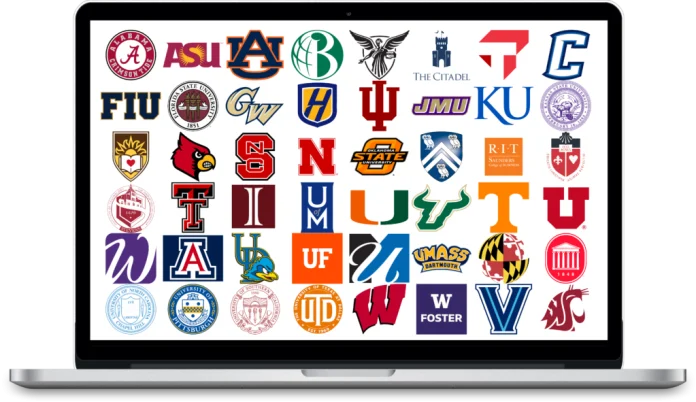In the constantly changing world of advertising, making sure that campaigns reach their full potential is key for businesses that want to be at the top of their game. Google Ads is a fantastic tool with an extremely large scope and targeted opportunities. The platform provides automated bidding strategies to help advertisers reach campaign goals in an effective manner. In this article, we will go over the AdWords automated bidding and its many advantages as well as some strategies to follow which might lead you not only to a successful but also highly performing campaign!
With more time savings and increased efficiency, the percentage of saving per unit can be increased. Automated bidding, as it is with AdWords, removes the trial and error approach in bid management where advertisers can simply automate the entire process of bidding once they have defined their goals and conditions. Utilizing machine learning algorithms along with historical performance data, automated bidding strategies update bids in real-time to ensure optimization for particular results like clicks or conversions or even return on ad spend (ROAS). This automation is a timesaver for advertisers because now instead of wasting time with bids, which can be managed by the system, they can devote more attention to their creative efforts and strategies.
Some significant contributors to superior product performance are efficient and well-tuned processes. In order to secure optimal campaign outcomes, AdWords implements automated bidding strategies through dynamically adjusting bids to attain the desired campaign objective. This is achieved by considering if the aim of the ad campaign is to maximize clicks or maximize conversions or maximize conversion value; in real-time, a vast range of elements which includes device type, location, and time plus characteristics of the audience is scanned by automated bidding algorithms in order to deliver an optimal bid per auction. With this level of optimization, ad spend goes into driving results with the most positive impact for advertisers.
To make this happen, the features that come with the plan have to be well-developed and customizable. Although AdWords’ automated bidding eliminates some of the human work, advertisers still have great control over the strategies. Google Ads provides many automated bidding strategies such as Target CPA (Cost-Per-Acquisition), Target ROAS (Return on Ad Spend), Maximize Conversions, and Enhanced CPC (Cost-Per-Click) that fit various campaign objectives and performance goals. Bidding strategies can be selected depending on specific objectives with subsequent adjustment settings like bid adjustments, bid limits, and conversion settings enhancing the exactness of performance for better optimization of results.
Real-time adjustments and insights allow you to keep pace with your audience while making immediate adjustments that improve user experience. By allowing itself to alter its decisions according to the fluctuating environment and the behavior of end-users, automated bidding in AdWords stands as a major advantage. In mere milliseconds, automated bidding algorithms process a huge chunk of data, allowing bids to be adjusted automatically for peak performance and to exploit new opportunities. Moreover, AdWords supports advertisers with elaborate tracking and statistics reporting that show how well the bidding performance is going; this helps them follow trends and make more informed decisions when wanting to optimize their campaigns more intensively.
Scalability and Performance Consistency: In the case of advertisers that have to deal with very large campaigns made up of very many keywords, ad groups, and campaigns, manual bid management is a very challenging job that can consume lots of time. AdWords’ automated bidding system provides the scalability and consistency, which means that advertisers can consistently apply their bidding strategy across all aspects of their campaigns. With this level of scalability, this uniformity across the entire account means optimal optimization at scale whereby efficiency is maximized while performance is at its peak.
Furthermore, continuous learning and improvement are an essential aspect of Agile management as it ensures that the process is always evolving and adapting to new knowledge and experience gained in each iteration. AdWords automated bidding algorithms are gathering data and historical performance insights, which makes them more effective each time they have more. Automated bidding algorithms, on the other hand, can continuously monitor and analyze performance metrics to optimize their bidding strategies based on trends and evolving patterns in an effort to ensure that bids are tuned to secure desired results for advertisers. This bid optimization process helps keep campaigns competitive in fluctuating digital advertising scenarios where only good performers prosper while the rest languish behind with poor performance statistics.
The use of AdWords automatic bidding is a significant part of an advertiser’s attempt to make their digital advertisement campaigns efficient, effective, and expandable at the same time. With the integration of machine learning techniques and real-time data-driven solutions for decision-making, AdWords automated bidding strategies allow advertisers to bid dynamically based on their objectives to ensure better results that are quick and easy. As we continue living in the digital age where advertising keeps on changing, automated bidding will never cease being vital for firms that want to always stay ahead and hit target market goals as per demand and supply within a dynamic world full of competitors.

